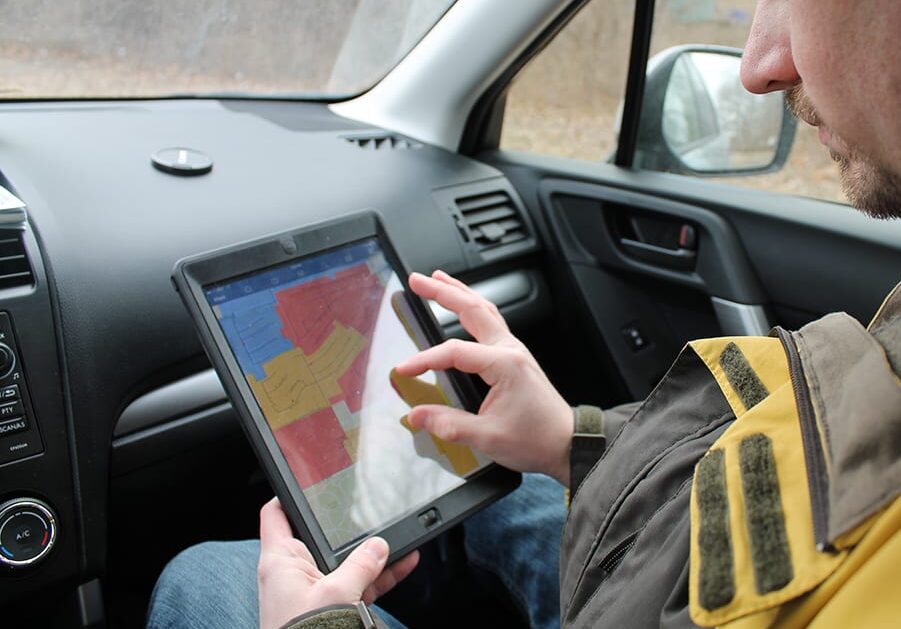Innovation and The Use of Technology

Introduction to Innovation
The telecommunications industry has been at the forefront of innovation for decades, most visibly during the last few years with the transition to online throughout the pandemic. We have progressed from basic voice communication to a complex web of information and resources, all in a relatively short amount of time. For most of us, we can access nearly anything at incredible speeds, and they keep increasing. How can that be? The massive fiber infrastructure continues to evolve and deliver all kinds of content at literal light speed.
We know about wi-fi networks, fiber optic cables, the cloud, and artificial intelligence, but what are we missing? What is the future of utility innovation and what may we expect in the coming years?
Why Innovate?
Innovation improves our quality of life, whether through finding new ways to solve problems or combining existing components to create new realities. When it comes to the telecommunications industry, innovation brings us just a few clicks away from one another, even if we’re on opposite sides of the globe. We’ve also developed our existing processes to increase speeds, and in turn, convenience. As information becomes more accessible, we have the ability to educate ourselves, searching for knowledge of any subject we’d like. The continuation of innovation will eventually allow us to provide reliable internet services all across the world: developing countries, underserved and rural areas, etc.
Put simply, when the wheel was invented, the creators weren’t thinking about modern-day cars. That’s why we innovate. We can estimate how certain processes or objects will evolve and be of use in the present, but there’s no telling where they will end up.
What are the Benefits?
As little as 10 years ago, we were nowhere near the volume of resources and entertainment accessible to us today. Now we have search engine optimization, so Google will show us web pages that are most relevant to the search. Different cable networks run their own streaming services, in addition to initial entrants like Netflix and Hulu. And think about how far e-commerce has come in the last decade alone. Global giants like Amazon have granted us convenience and a whole new approach to shopping, unheard of just a few decades ago.
While the current state of e-commerce didn’t come about entirely due to Amazon, the idea of online payments has been globally adopted since they normalized the concept years ago. In most cases, innovation equals efficiency: new perspectives, questions, strategies, resources, and cost-effectiveness can all incite change and promote thoughtful discussion. However, innovation doesn’t happen simply because someone has a good idea, they must also have access to new and cutting-edge technologies. When companies keep an eye on the most recent technologies, they can put their ideas into practice and change our world for the better.
Transition to Online – What it Brings
Do you remember the initial transition to online classes, meetings, and services at the beginning of the pandemic? After the first few weeks, the “Zoom Boom” began; offices moved to online with hybrid schedules. The same with schools and universities. The switch couldn’t have been as smooth as it was without an incredible foundation of telecommunications infrastructure. And it continues to evolve to properly handle the growing volume of internet traffic. Normal users of these virtual meeting softwares may also spark innovation themselves, noting any issues they run into and forming their own opinions on what could be improved or redesigned.
Hybrid schedules are now a part of many businesses, and conversations surrounding work-life balance are becoming more commonplace. The freedom that comes with working from home is vital to some employees, and one of the results was a new perspective regarding employee and personal well-being. Innovation affects more than just our processes; it can change the way we view the world.
Today’s Processes
Telecommunications has undergone significant transformations in recent decades, with one notable example being the widespread adoption of fiber optic cable over traditional coaxial or twisted pair copper. The benefits of fiber optics over traditional cables include significantly higher bandwidth to support internet connectivity, video streaming, and cloud computing. Fiber optics are also immune from electromagnetic interference, allowing for installation in highly variable environments. Additionally, fiber optics can transmit signals over much larger distances than other technologies, decreasing the need for signal regeneration and increasing efficiency.
The Internet of Things (IoT) is another area where the telecommunications industry has supported significant innovation in recent years. IoT refers to the growing network of connected devices, from smart thermostats to wearables, that are connected to the internet. These networks play a critical role in enabling these devices to communicate and share data with each other, creating new opportunities for automation and efficiency across various industries.
An interesting phenomenon is occurring while fiber optic telecommunications networks are being rapidly expanded closer to the consumer. The use of mobile devices is allowing field engineers and contractors to communicate design decisions and construction progress to the project team in real time, simplifying the process. These connections are being supported by the existing networks in the very locations that are being upgraded and expanded. This was not possible a decade ago as the existing networks were not robust nor dense enough to support it on a large scale. Through this modernization, different aspects of a project can be completed much faster and with more accuracy. Remember when we talked about efficiency? At first glance, one might question why the network requires upgrading if it can support a workflow like this. The answer is bandwidth. Bandwidth is paramount, and the amount required to stream on platforms like Netflix far exceeds that required to communicate network design and construction information.
Future of Telecom?
Overall, the past decade has seen significant innovation in telecommunications, driven by advancements in network infrastructure, mobile devices, artificial intelligence, machine learning, and the IoT. These innovations have transformed the way we communicate, work, and live. Thanks to these devices and the expanding network of technology, we are poised to continue shaping the future of telecommunications in the years to come.
Engineering telecommunications networks can be challenging given the myriad of environmental, right-of-way, and regulatory challenges each project must navigate. BHC’s thirty-plus years of engineering these networks makes us uniquely qualified to take on these challenges. Our ‘No Problem’ customer service pledge is our commitment to providing professional expertise for all client projects. Get in touch with one of our experts today at ibhc.com/connect/ to learn more about how we are committed to helping connect communities.
